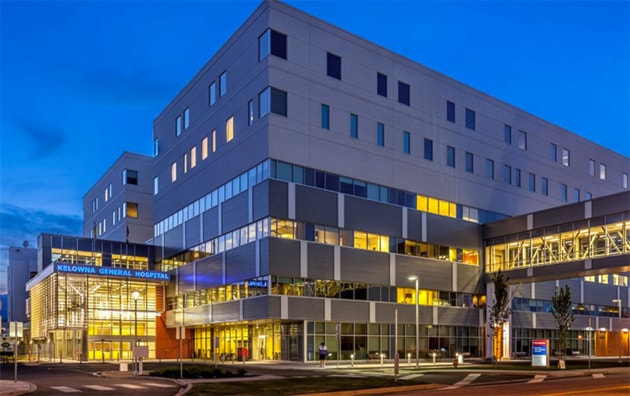The shortfall of family doctors in the Central Okanagan has placed increasing pressure on medical walk-in clinics, says the founding director of the Walk-In Clinics of B.C. Association.
Mike McLoughlin, who operates the Medi-Kel Family Practice clinics in Kelowna, says two clinics, one in Rutland last summer and another more recently in Glenmore, have closed, placing greater patient care demand on the remaining walk-ins.
Adding to his frustration is Kelowna General Hospital hiring local general practice physicians, called hospitalists, to opt out of running their own practice to work on-staff at the hospital.
“What KGH is doing by hiring hospitalists out of the local family doctor pool is cutting off your nose to spite your face,” McLoughlin said. “When you take a family doctor out of the pool of doctors, you orphan a whole bunch of their regular patients. It’s fair to expect some of those patients will end up on the doorstep of a walk-in clinic.
“But the walk-in clinic in turn can’t handle the patient increase and either close down, like what happened in Glenmore, or close earlier to manage the patient volume.”
Like most issues with health care, there are no easy solutions because it comes down to how the provincial health care dollars are carved up.
McLoughlin said walk-in clinic doctors can bill for 50 patients a day, can only bill for half after that up to 65, and then beyond that can’t bill at all.
“What is needed is a more flexible patient billing cap to account for heavier patient traffic and demand, such as during flu season,” he said. “Change the overall daily cap to 65 patients a day or set weekly/monthly cap limits instead of daily ones.”
As for McLoughlin’s frustration with KGH’s physician hiring needs, Dr. Mike Ertel said the hospital hiring GPs is a reflection of a changing reality on how doctors with independent practices operate.
“We still have 25 GPs who follow their patients when they are admitted to the hospital, but the majority no longer do not. That’s pretty standard for growing urban centres today,” said Ertel, the executive director for Interior Health Central, a support position for chiefs-of-staff and medical personnel at hospitals in Kelowna, Vernon, Oliver and Penticton.
“So we need to hire family physicians to deal with those admitted patients or work in the ER on a daily basis. Our hospitals are bursting at the seems. We have recruited 80 physicians over the last 18 months and 29 alone since October.
“That may be right up there as the most in the country. It reflects that people want to come here and work, but that being said we still need more family physicians.”
At KGH, Ertel, an ER doctor, said patient volumes anticipated for 2020 or 2021 are now turning up a the hospital’s doors, a reflection of the population boom in the Central Okanagan.
“KGH’s ER had 80,000 visits in 2016, up 7.5 per cent from the previous year. We were the third busiest ER in B.C.,” said Ertel, who added that beyond what was a bad flu season, there was also an increase in acute care patients.
“We are seeing a proportionate increase in the number of people we are seeing and they are sicker which requires more care and attention.”
Tristan Smith, executive director of the Central Okanagan Division of Family Practice, says tackling the GP shortfall requires a collaborative effort.
There is no single solution, but rather a mix of different approaches that offer a pathway to increased patient access to family doctors in the region, he says.
Some of those recruiting tactics include marketing the appeal of the Okanagan lifestyle, a ‘red carpet’ orientation program to encourage and welcome new doctors to relocate here, and working in coordinator with the Health Match BC provincial doctor recruitment initiative.
“We’ve also done work in family doctors’ offices to improve efficiencies around appointments and office systems to maximize the time they have available for patients,” Smith said in a written statement to Black Press.
“With this combination of new doctors and increased capacity, we’ve been able to match more patients in our community, including more than 1,600 seniors who previously did not have a doctor for ongoing care through our A GPforME program.”
McLoughlin says he has been placated somewhat by the potential success of initiatives outlined by Smith, but he remains concerned about “silo thinking” where walk-in clinics don’t have the resources or billing flexibility to compete with larger health care institutions.
Meanwhile, Ertel says options for those without a doctor are to use the 8-1-1 provincial health information and advice hotline staffed by registered nurses, try to seek out an appointment at a local walk-in clinic or come to KGH emergency.
“That places more pressure on us but we try to get people through as fast as possible,” Ertel said directing more people to a hospital emergency department.
“We have piloted a couple of new ideas to decrease the wait times, particularly for dealing with minor medical issues. We just have to ask people to be patient, we’re doing the best we can to minimize the wait time.”
